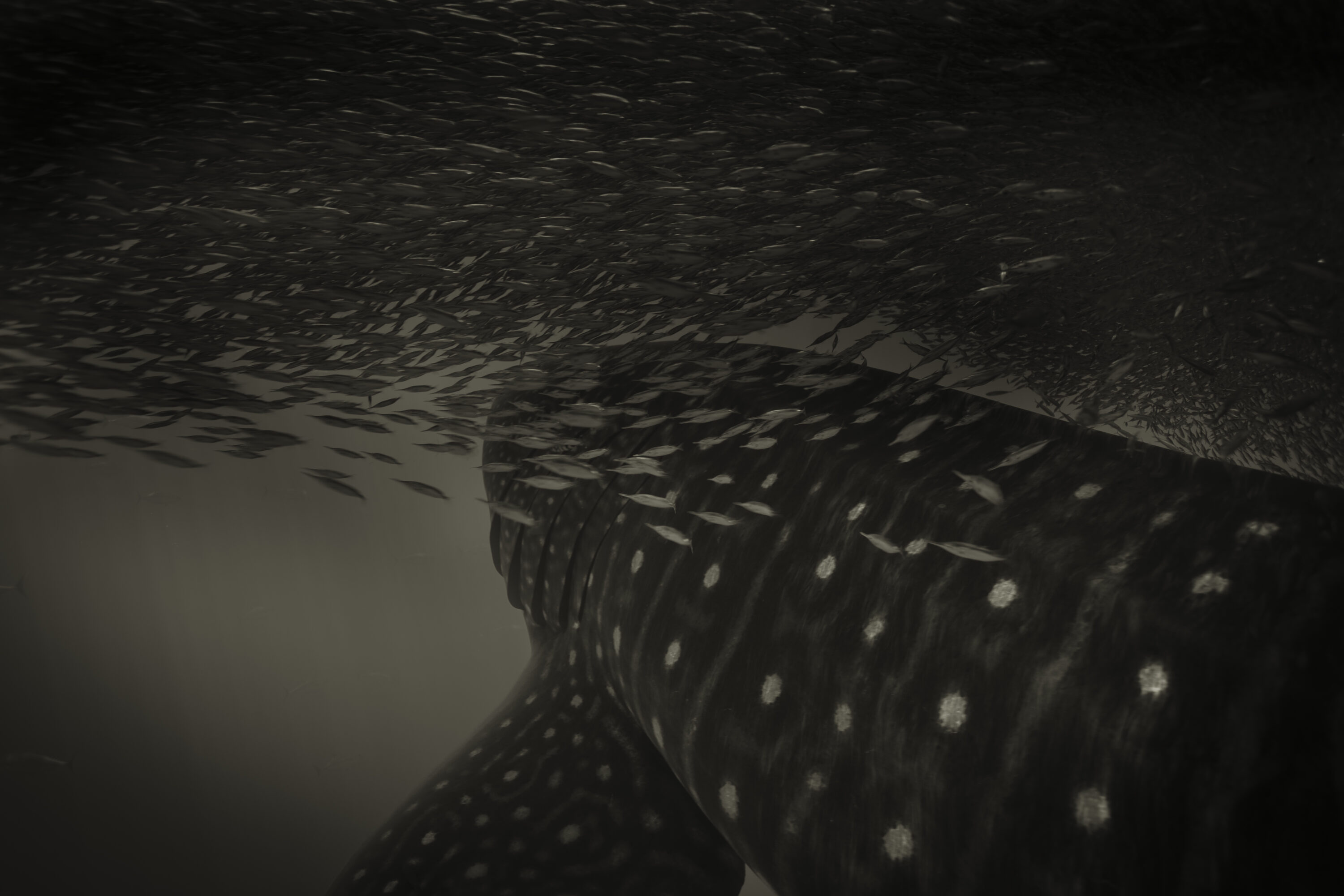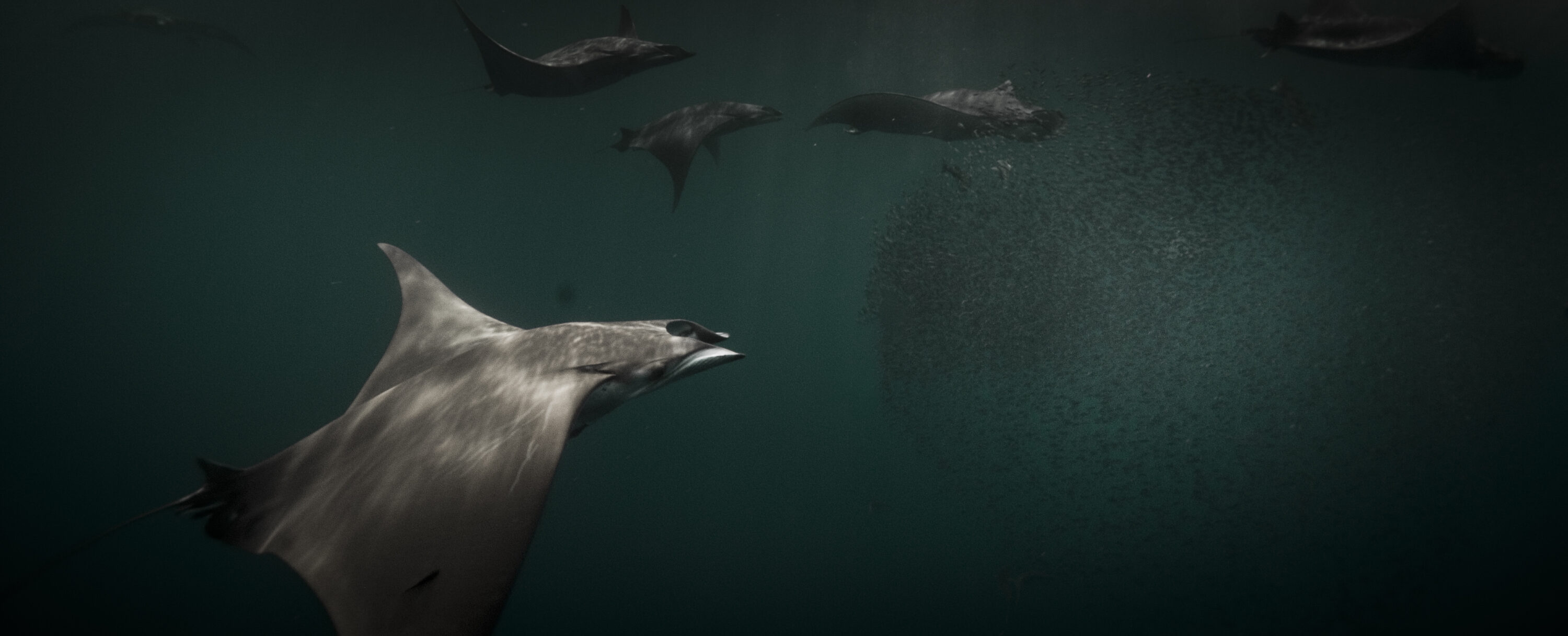INNOVATE – into the Twilight: Shedding Light on Sharks, Rays, and the Ocean’s Hidden Frontier
In the vast layer of ocean stretching from 200 to 1000 meters deep, billions of small fish and invertebrates rise and fall each day in the largest animal migration on the planet. These mesopelagic creatures form the beating heart of the ocean’s food web, connecting sunlight and primary production at the surface to the deep ocean. Yet for all their importance, the twilight zone remains one of the least understood ecosystems on Earth.
For oceanic giants like whale sharks and devil rays, this hidden realm may be even more critical than we ever imagined. These endangered filter-feeding elasmobranchs don’t just skim plankton at the surface: they dive deep, sometimes beyond 2,000 meters, presumably chasing dense layers of mesopelagic prey. Understanding this link could redefine how we see their ecology and how climate change and indirect fishing pressure can further threaten them.
That’s where INNOVATE comes in. Led by Dr. Jorge Fontes at the University of the Azores, collaborating with Dr. Christophe Guinet at CNRS, Patrick Lehodey at Mercator Ocean and Eng. Nuno Simões at Azores Robotics, INNOVATE is a pioneering project that aims to unlock the secrets of the twilight zone using cutting-edge technology and innovative field science. Supported by the Save Our Seas Foundation, the team is developing the world’s first micro-sonar-triggered camera tag, a breakthrough in animal-borne technology.
Seeing the ocean through a shark’s eyes
The concept is simple but revolutionary: a tag attached non-invasively to a shark or ray carries an array of sensors — including accelerometers, depth and temperature loggers, and critically, a miniature sonar that maps prey in real time. When the sonar detects dense layers of mesopelagic life, it automatically triggers the onboard camera, capturing never-before-seen images of predator–prey interactions in the twilight zone.
This new tool will allow scientists to measure not only where sharks and rays go, but what they are doing and what prey fields they are targeting. Combined with bioluminescence sensors and advanced modelling, the data will feed into SEAPODYM, a powerful ecosystem model that predicts how prey respond to climate change and fishing pressures.

Photo © Jorge Fontes
Why this matters now
The twilight zone is coming under increasing pressure. With the world’s population growing, there is rising interest in harvesting mesopelagic fish as a new frontier for fisheries. At the same time, climate change is altering oxygen, temperature, and productivity in mid-ocean ecosystems. These stressors threaten to ripple up the food chain, impacting iconic yet vulnerable species like whale sharks (Rhincodon typus), sicklefin devil rays (Mobula tarapacana), blue sharks (Prionace glauca), and shortfin makos (Isurus oxyrinchus).
By quantifying the dependence of these predators on mesopelagic prey, INNOVATE will provide the scientific foundation for conservation and management decisions at exactly the moment when they are most needed.
Building on innovation
INNOVATE is part of a larger wave of technological progress led by the team in the Azores. Through the EcoDivePWN, BioFAD and NAUTILOS projects, researchers are already advancing new generations of non-invasive biologging devices — tools designed to respect animal welfare while capturing high-resolution ecological data. Together, these initiatives are helping transform sharks and rays into “oceanographers,” collecting data from places no ship or robot could easily reach.
A vision for the future
The story of INNOVATE is about more than technology. It is about understanding how life in the ocean’s twilight zone sustains marine life and regulates climate. It is about giving managers and policymakers the knowledge they need to prevent shortsighted exploitation of resources that underpin ocean health. And it is about the chance to glimpse of the mysteries that still lies beneath the waves.

Photo © Jorge Fontes
